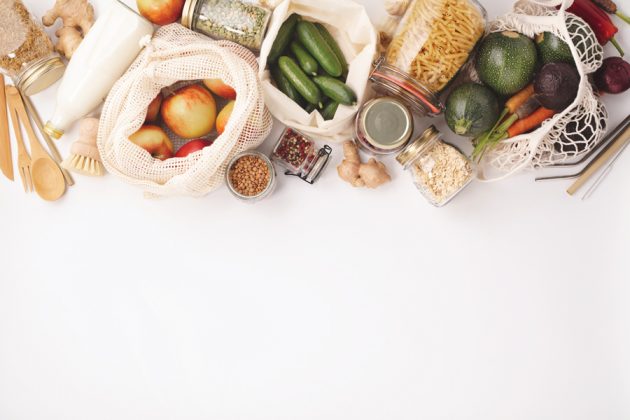
Recipe to Retail: To go organic or not?
By Birgit Blain
Products branding marketing Organic foods Photo © Natalia Klenova/ Adobe Stock
Photo © Natalia Klenova/ Adobe Stock Sales of organic products are growing, but does organic make sense for your brand? There are many factors to consider before launching an organic line.
Market opportunity
Fresh categories represent the most frequently purchased organic products. Fresh fruits and vegetables top the list, and are experiencing phenomenal growth, followed by meat and poultry; dairy; and breads and grains.
Six packaged food categories represent over 20 per cent market share, led by baby food; infant and toddler snacks; and infant cereal. Broad leaf bagged vegetables; soya, rice and alternative beverages; and dried fruit complete the list.
Although some CPG categories show impressive percentage growth, it’s critical to examine the dollar sales on which it’s based, to reveal a more accurate picture.
Category analytics
Conventional foods dominate most CPG categories. What percentage of sales and dollars does organic represent? Is the category over or under indexed? Analyzing the overall category and the role organics play will expose white space opportunities.
Is it advisable to expand a conventional line with organic offerings? Will it generate incremental sales for the brand and retailers, or cannibalize existing sales?
Regulations
How do regulatory requirements impact products, processes and the business as a whole?
Displaying the Canada Organic logo or making an “organic” claim on food sold inter-provincially, exported and imported requires certification under the Canadian Organic Standard. Products must have minimum 95 per cent organic content. Additionally, ingredients, food additives and processing aids must comply with the Permitted Substances Lists.
Sourcing and procurement
Are the required organic ingredients readily available? It’s critical to ensure there is ample supply, especially since organic agricultural inputs can be more susceptible to environmental threats. Further, an alternate source of supply is a necessary safety net against supply interruptions and cost increases.
Packaging
Organics are more aligned with environmentally conscious packaging. What packaging format and materials are most appropriate for the product? Does it require changes to the packaging process and equipment?
Pricing strategy
Some of our clients insisted on using organic ingredients, only to price themselves out of the market. Price is a top driver of buying decisions. Ingredient cost is a big factor that will drive up the cost of goods and SRP.
Myriad surveys claim consumers are willing to pay more for organics, but how much more? Is it dollars or cents? That’s an important distinction. The SRP must be within the threshold to garner sales.
Competition is tough from store brands such as President’s Choice that price organics more affordably, compared to specialty brands.
Target consumer
It’s critical to know what makes your target consumer tick. Who is the organic shopper? Do they shop your category and what drives their purchase decisions? Determine where organic ranks on their decision tree; it varies by category. Are organic buyers a viable target to achieve sales and profit goals or do they represent a small segment of shoppers?
Brand positioning
Canadian consumers are becoming increasingly mistrustful of organic claims. Does your brand have a compelling point of difference or rely solely on organic? Does organic align with your brand positioning or necessitate development of a new brand?
Timing
Increasing food prices are putting pressure on strained wallets. Canadians are price conscious and have become cautious spenders. Is this the right time to launch a premium offering?
The above list of considerations is by no means exhaustive. Thorough research culminating in a sound strategic plan sets the stage for success.
 As a CPG food consultant, Birgit Blain transforms food into retail-ready products. Her experience includes 17 years with Loblaw Brands and President’s Choice. Contact her at birgit@bbandassoc.com or learn more at www.bbandassoc.com.
As a CPG food consultant, Birgit Blain transforms food into retail-ready products. Her experience includes 17 years with Loblaw Brands and President’s Choice. Contact her at birgit@bbandassoc.com or learn more at www.bbandassoc.com.
This article was originally published in the July/August 2021 issue of Food in Canada.
Print this page